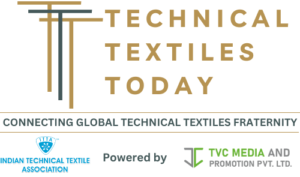Optimized Article (Active, Concise, and Smooth Flow):
The global eco-friendly food packaging market is set for rapid growth as sustainability takes center stage in the packaging industry. Rising environmental awareness, evolving regulations, and consumer preference for green products are major drivers. According to a recent Fact.MR report, the market will expand steadily over the next decade.
Currently valued at US$ 190 billion, the market is expected to reach US$ 380 billion by 2032, growing at a CAGR of 7.2% from 2022 to 2032.
Eco-friendly packaging includes biodegradable, compostable, recyclable, and reusable materials. These solutions now serve a wide range of sectors, including restaurants, cafes, fast-food chains, catering services, and online food delivery platforms. As a result, they provide both environmental benefits and functional value.
Key Market Drivers
Growing environmental awareness: Consumers increasingly seek sustainable options. Therefore, brands are switching to recycled paper, plant-based plastics, and biodegradable polymers to reduce waste.
Expansion of food delivery services: The surge in online and takeaway meals fuels the need for packaging that combines convenience, safety, and eco-friendliness.
Regulatory action: Governments across the globe are enforcing stricter plastic regulations. Consequently, companies are moving toward greener alternatives.
Technological advancements: Continuous innovations in biodegradable films, barrier coatings, and intelligent packaging improve shelf life and product protection while meeting sustainability goals.
Regional Insights
According to Fact.MR, North America—especially the United States—will continue leading the global market. This growth stems from strong environmental initiatives, steady consumer spending, and strict packaging regulations.
Meanwhile, East Asia is projected to gain notable traction by 2035, thanks to robust manufacturing bases and rising demand from the foodservice sector. Furthermore, markets in Southeast Asia, Central and South America, and Australia are also expanding as companies implement localized sustainable solutions.
Competitive Landscape
The eco-friendly food packaging market remains highly competitive. Leading players focus on innovation, acquisitions, and sustainability-driven designs to strengthen their market positions.
Key companies include:
Mondi plc, Pactiv Evergreen Inc., PaperFoam bv, Printpack, Amcor plc, Ball Corporation, BASF SE, Berry Global Inc., Crown Holdings Inc., Elopak AS, GWP Packaging, Huhtamäki Oyj, Smurfit Kappa Group plc, Sonoco Products Company, Swedbrandgroup, Tetra Pak, WestRock Company, and WINPAK LTD.
Manufacturers are investing in cost-efficient biodegradable materials and customized designs to meet diverse client needs. In addition, growing global campaigns against plastic waste are creating new opportunities to engage eco-conscious consumers.
Recent Developments
- In 2021, Amcor launched an eco-friendly chocolate packaging line that featured recyclable containers for cocoa powder, reinforcing its commitment to sustainability.
- Other industry players are developing compostable packaging, biodegradable films, and renewable materials to enhance performance and reduce ecological impact.
Future Outlook
Looking ahead, technological innovation and consumer demand will continue driving the global shift toward sustainable packaging. Companies that balance durability, convenience, and eco-responsibility are likely to lead the market. Ultimately, the eco-friendly food packaging sector offers vast potential—combining economic growth with environmental benefits.
